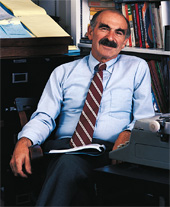The Definition of “Specsmanship”
Wikipedia defines Specsmanship as the inappropriate use of specifications or measurement results to establish the putative superiority of one entity over another, generally when no such superiority exists. It is commonly found in high fidelity audio equipment, automobiles and other apparatus where uneducated users identify some numerical value upon which to base their pride or derision, whether or not it is relevant to the actual use of the device. Smartphones and the early microprocessor market are also examples.
Two Specsmanship Case Studies
Most recently, we are seeing specsmanship in the smartphone market. As the smartphone market has matured into 7th, 8th, 9th generations of smartphones, the differentiation among products has been reduced to smaller and smaller differences in the products : resolution of the camera, display size or alleged brightness, etc.. In earlier generations, Apple, and the Android phone manufacturers created a highly effective intangible market need to possess their latest generation phone in which features were less important. I called this market need the smartphone “Star Wars” phenomenon causing people to line up around the block as if to see the latest Star Wars film. Most market analysts now agree that the smartphone market frenzy has run its course. Apple’s strategy to reinvigorate the market by creating a higher price point product has predictably fallen flat. Apple’s move surprised me because the marketers at Apple seemed to miss the consumer market sentiment. Water resistance in my view was the last major device feature with a market need to protect phones from the dreaded “toilet drop.” Samsung introduced water resistance in the 5th generation Galaxy, and permanently in the Galaxy 7. I have not been motivated to buy a new phone since the Galaxy 7.
In another, more dramatic and pivotal example, my first personal experience of the specsmanship phenomenon was at Intel, during the original first generation microprocessor war: the Intel 8086 versus the Motorola 68000. Without diving too deeply into the technical specifications, the Intel 8086 on its face was technically inferior to the Motorola 68000 at a critical time when microprocessors were very new, customers had doubts, and the market was just beginning to establish a foothold in electronics design. Facing this marketing challenge, Intel’s Vice President of Marketing at that time, Bill Davidow, made a momentous decision to “differentiate” Intel and the 8086 not its specifications, but on Intel’s long-term vision for its microprocessor family of products and to focus its marketing efforts on senior management executives of its customers, not the engineers. Davidow famously delivered a presentation to the Intel sales force, “How To Sell A Dog.” The message was to ignore the spec and concentrate on the customers higher level needs, and the security of an investment in Intel with its long-term vision to provide them with greater value and competitive advantage.
Motorola fatefully decided to concentrate its marketing strategy entirely on the superior technical specifications of the 68000, poignantly winning a small skirmish but losing the war. Intel dominates the general purpose microprocessor market to this day. The Intel versus Motorola story is definitively detailed in Bill Davidow’s now famous book, Marketing High Technology: An Insider’s View. Davidow’s book also includes numerous gems of insight into marketing. Bill’s thoughts on the barriers to a new entrant into an existing market have stuck with me over the years.
If the smartphone market is ever to revive, it needs to learn from Davidow’s lesson, ignore the specs, and concentrate on creating a higher level marketing message that meets deep customer needs.
Bill Davidow, former Intel Marketing Vice President
HBS Professor Ted Levitt’s Total Product Concept And Its Influence On Davidow
Though I have met with Bill Davidow many times, spent time with him, and invited him to speak with executives of an emerging technology company, I have never directly asked him about the degree to which Harvard Professor Ted Levitt’s concept of a Total Product influenced him. It does seem highly likely that it is the case. By way of example, marketers often refer to “product differentiation.” Specsmanship is the lowest possible form of product differentiation. Creating a higher level of product value is the true essence of product differentiation. This is also the essence of Levitt’s now legendary Total Product. What is different in the Intel case is my memory of how Levitt’s Total Product model, was adapted at Intel. I will explain.
Harvard Business School Professor Ted Levitt
READ MORE: Levitt HBR: Marketing Success Through Differentiation of Anything
Levitt’s classic Total Product model is graphically displayed here:
In my personal view and recollection which I show here, I believe Davidow focused on the “Augmented Product,” “Expected Product” and the “Potential Product,” and avoided the “Generic Product” to win the specsmanship war with Motorola. I also distinctly remember a slightly different Intel model which is shown below.
The Intel Variation On The Ted Levitt Total Product Model
It is my recollection that we at Intel, and most likely Bill Davidow in particular, adapted the Ted Levitt model to Intel’s particular new market realities, and focused on the outer circle, “Corporate Vision” and “Product Roadmap” to win the microprocessor war. The “Engineering Deliverable” is not a product. It is only a naked engineering project deliverable. Specsmanship does not make it a product. The “Corporate Vision” and “Product Roadmap” offer greater long-term value to customers, and ultimately create a powerful brand image.











